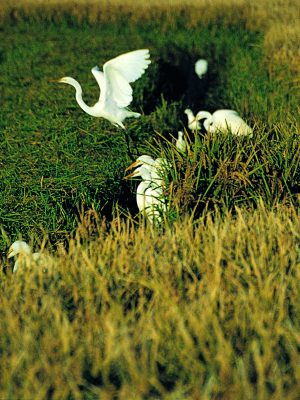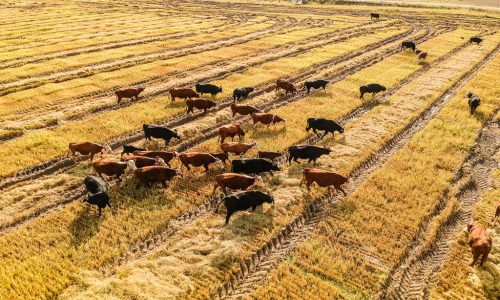Sustainability
Uruguayan rice growing system is sustainable and is characterized by the integration with other production systems, through rotation of rice crop with livestock production and other rainfed crops (soybeans, sorghum, corn, etc.)
This form of production gives Uruguayan rice significant comparative advantages.
Environment
Biodiversity is promoted by rotation of different food crops and livestock.
70% of the year, land is used for pasture-based meat production systems and/or other crops.
Low input/output ratio
The periods of time between the successive rice crops allow soil fertility restoration, reduce the frequency of multiplication of weeds and diseases caused by bacteria and fungi, as well as maintain the balance between the populations of beneficial and harmful insects for rice crop.
High yields
Rotation enables crops to reach their maximum yield potential.

Improved Rice Crop Management Practices
Since 2009, the Guidelines for Improved Rice Crop Management Practices in
Uruguay, which include recommended practices for soil, agrochemicals, and
irrigation management, have been in force with regular updates, seeking to maximize
the efficiency of resources for rice production in Uruguay.
The main topics developed in these Guidelines are:
- Productive systems and sustainability
- Biodiversity management
- Crops preparation, systematization, and irrigation
- Crops protection
- Harvest and transport of rice
- Agrochemicals Management
- Workers’ Health and Safety

Guidelines for Improved Rice Crop Management Practices in Uruguay
Improved agricultural practices include a set of principles and technical recommendations applicable to the production, processing, and transportation of food, which allow us to achieve high production levels and high-value-added products. Their application in rice crop is aimed at ensuring the quality and safety of the product, the adequate and efficient use of the natural resources involved in the growing process (soil, water and biodiversity), and providing guarantees for the health and safety of the workers. (2009 version)

